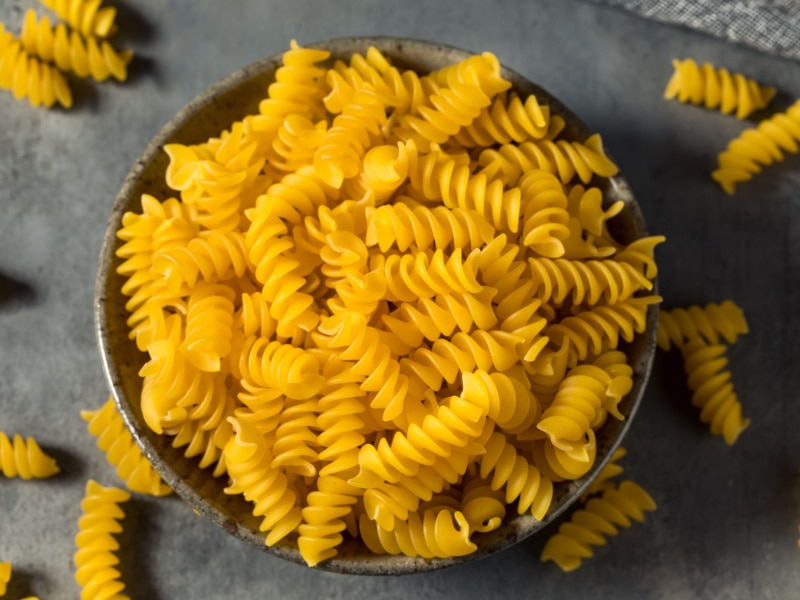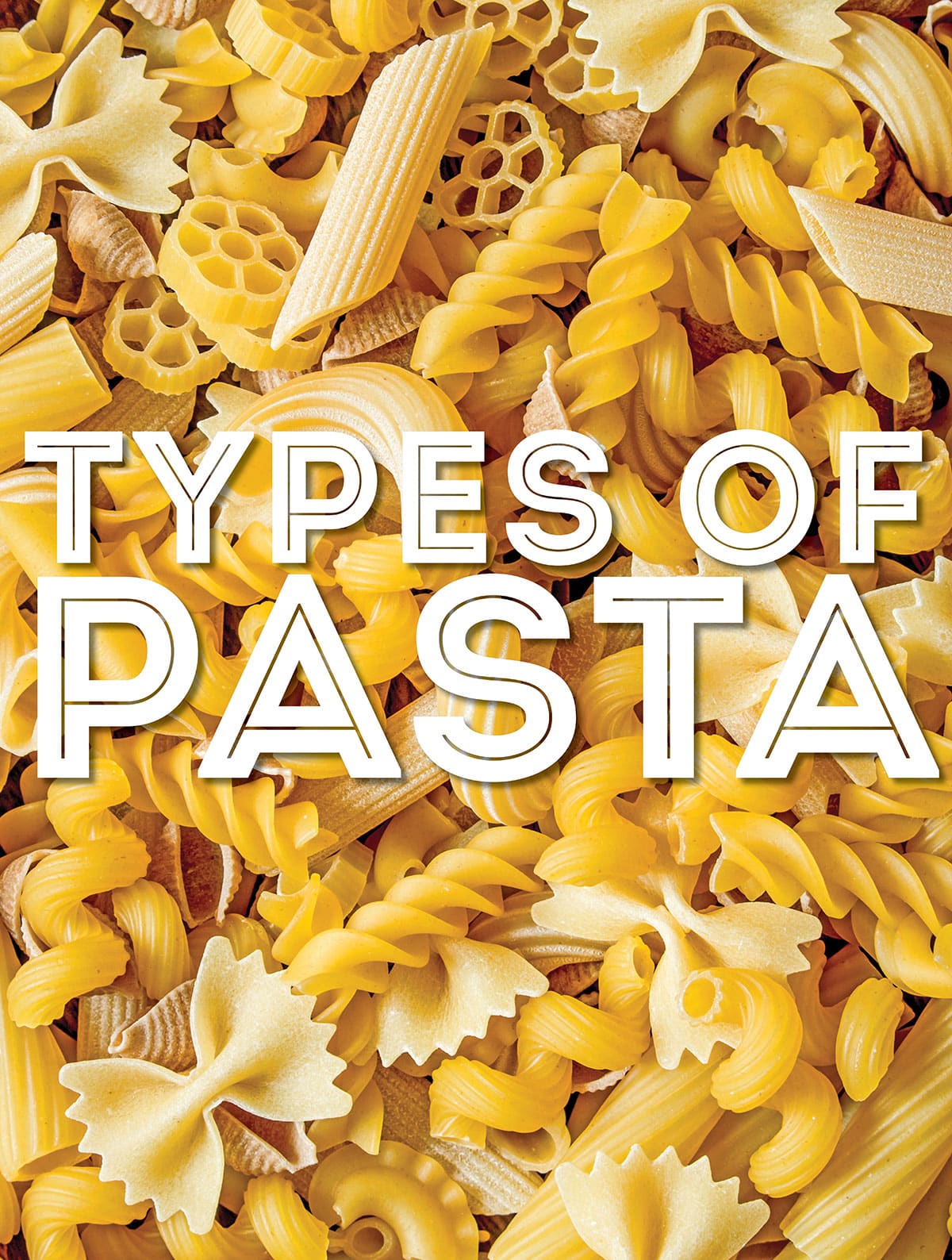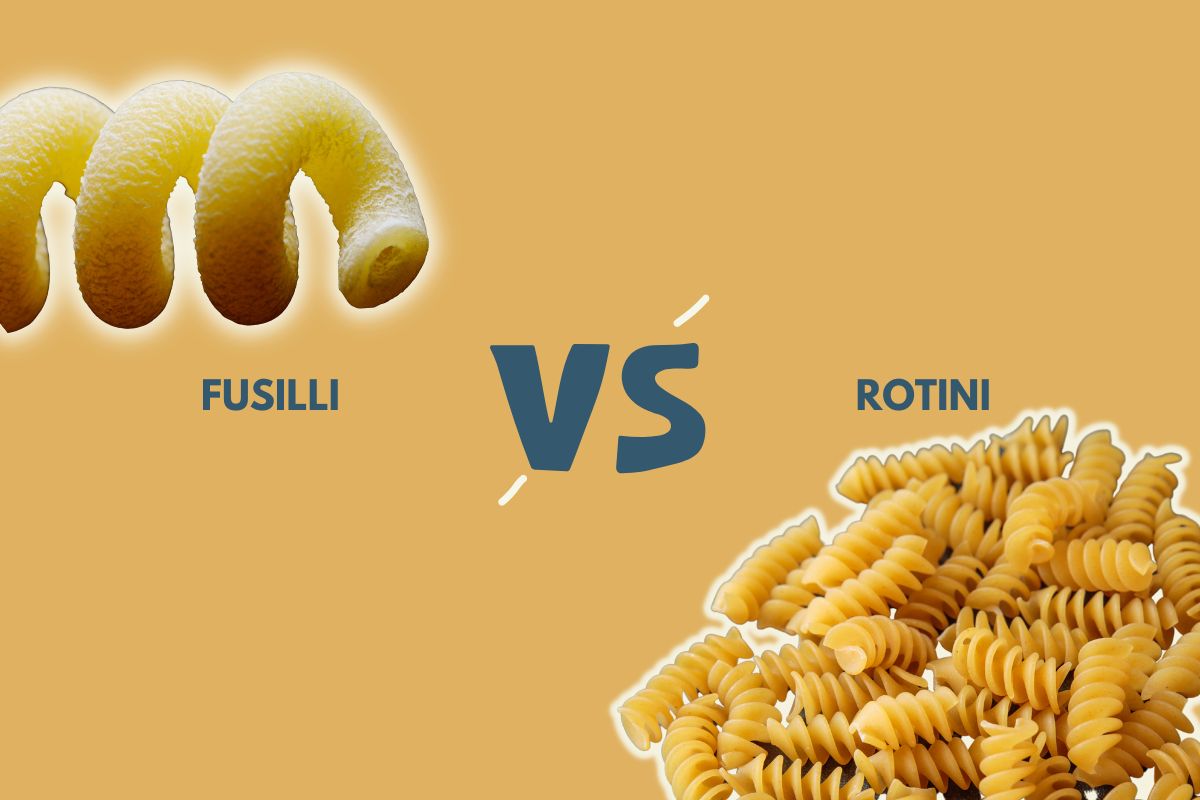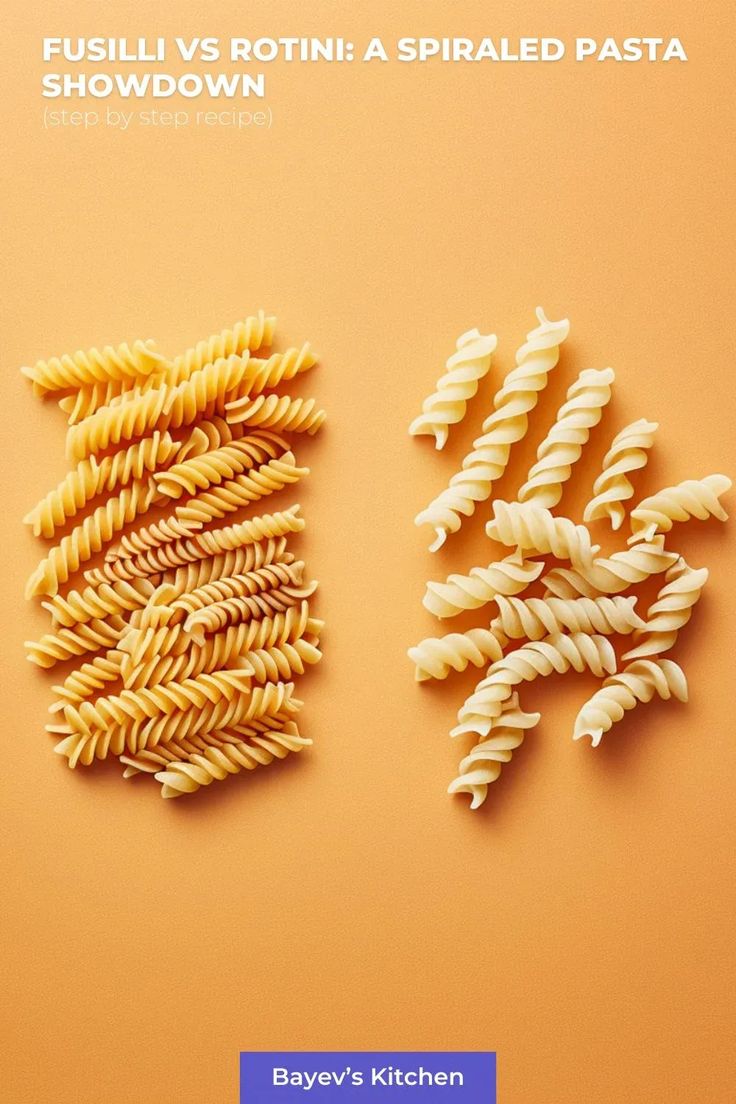Fusilli Pasta

Fusilli pasta is a popular choice among pasta lovers due to its unique shape and texture. It is made from flat strands of pasta that are twisted into curly spiral shapes, resembling springs. The spirals help to hold onto sauce and other ingredients, creating a delightful burst of flavor with each bite. Fusilli pasta can be cooked using various methods, such as boiling or baking, and it pairs well with a wide range of sauces, vegetables, and proteins. Its versatility and visually appealing shape make it a great addition to any pasta dish.
Fusilli Pasta Shape And Texture
Fusilli pasta is known for its unique shape and texture. It features long, curly strands twisted into a spiral shape, resembling springs or corkscrews. This spiral shape allows the pasta to hold onto sauces and other ingredients, creating a delightful burst of flavor with each bite. The texture of fusilli pasta is slightly chewy and firm, making it a satisfying choice for pasta dishes. Its visually appealing shape and delightful texture make fusilli pasta a popular choice for pasta lovers.
Fusilli Pasta Cooking Methods And Recipes
Fusilli pasta is a versatile option that can be cooked in various ways to suit your taste preferences. One of the most popular cooking methods is boiling the pasta in salted water until al dente, which typically takes around 8-10 minutes. Once cooked, you can toss the fusilli with your favorite sauce, such as a rich tomato sauce or a creamy Alfredo sauce. It also pairs well with vegetables, meats, and cheese, making it perfect for pasta salads, casseroles, or baked dishes. Get creative and experiment with different ingredients to create delicious and flavorful fusilli pasta recipes.
Rotini Pasta

Rotini pasta is a popular spiral-shaped pasta that adds visual appeal and texture to any dish. It is characterized by its twisted shape, resembling a corkscrew or helix. Rotini pasta is known for its ability to hold sauces and other ingredients well, thanks to its distinct ridges and grooves. These texture features allow the sauce to cling to the pasta, ensuring each bite is flavorful. Rotini pasta is versatile and pairs well with a wide range of sauces, vegetables, and proteins, making it a versatile and delicious choice for pasta dishes.
Rotini Pasta Appearance And Taste
Rotini pasta is known for its appealing appearance and unique texture. Its twisted shape resembles a corkscrew or helix, making it visually interesting. The spirals of rotini pasta not only catch and hold onto sauces, but they also create a pleasant mouthfeel. When cooked, rotini pasta has a tender yet firm texture, providing a satisfying bite. Its taste is neutral, allowing it to pair well with a variety of flavors and ingredients. Overall, rotini pasta adds both visual appeal and texture to any dish it is used in.
Rotini Pasta Pairing With Sauces And Ingredients
Rotini pasta’s unique shape and texture make it a versatile choice for pairing with different sauces and ingredients. Its spirals are perfect for capturing and holding onto sauces, allowing for a flavorful eating experience. Rotini pairs well with both light and heavy sauces, such as marinara, pesto, Alfredo, or creamy tomato. It also complements a variety of ingredients, including vegetables, meats, and seafood. Whether you’re making a classic pasta dish or experimenting with new flavors, rotini pasta provides a delightful base that effortlessly blends with a range of sauces and ingredients.
Differences In Shape

Fusilli and Rotini have distinct differences in their shapes. Fusilli pasta is shaped like small springs or curly spirals, while rotini has a tighter helix shape with more compact spirals. The larger spirals of fusilli make it an ideal choice for capturing and holding onto sauces, while the tighter spirals of rotini provide a denser texture. Despite their similar appearance, it’s important to confirm the pasta in the box or bag before buying, as some manufacturers label fusilli as rotini and vice versa. Choosing the right shape will depend on the desired texture and sauce-holding capabilities for your dish.
Fusilli Vs Rotini: Spiral Shapes Compared
When comparing the spiral shapes of fusilli and rotini pasta, there are distinct differences to consider. Fusilli pasta features small springs or curly spirals, while rotini has a tighter helix shape with more compact spirals. The larger spirals of fusilli make it ideal for capturing and holding onto sauces, while the tighter spirals of rotini provide a denser texture. It’s important to confirm the pasta in the package before buying, as some manufacturers may mislabel fusilli as rotini and vice versa. Choosing the right spiral shape will depend on your desired texture and sauce-holding capabilities for your dish.
Which Shape Holds Sauce Better?
When it comes to holding sauce, both fusilli and rotini pasta shapes are excellent choices. However, the larger spirals of fusilli make it slightly better at capturing and holding onto sauces. The twists and curves of fusilli provide more surface area for the sauce to cling to, ensuring that every bite is bursting with flavor. On the other hand, rotini’s tighter and more compact spirals also do a great job of holding sauce, ensuring that each strand is coated. Ultimately, the choice between fusilli and rotini will depend on personal preference and the specific dish you’re preparing.
Nutritional Value

When comparing the nutritional value of fusilli and rotini pasta, there are a few key differences to note. In terms of calories, both pasta shapes have similar amounts, with around 200-220 calories per cooked cup. However, when it comes to nutrient content, fusilli pasta tends to have slightly higher amounts of protein and fiber compared to rotini. This can make fusilli a slightly more filling and nutritious choice. Additionally, both pasta shapes are typically made from enriched semolina flour, which provides essential vitamins and minerals like iron and B vitamins.
Comparing Fusilli And Rotini In Terms Of Calories And Nutrients
When comparing the nutritional value of fusilli and rotini pasta, there are a few key differences to note. In terms of calories, both pasta shapes have similar amounts, with around 200-220 calories per cooked cup. However, when it comes to nutrient content, fusilli pasta tends to have slightly higher amounts of protein and fiber compared to rotini. This can make fusilli a slightly more filling and nutritious choice. Additionally, both pasta shapes are typically made from enriched semolina flour, which provides essential vitamins and minerals like iron and B vitamins.
Health Benefits Of Spiral Pasta Options
Spiral pasta options like fusilli and rotini offer several health benefits. Firstly, they are a good source of carbohydrates, providing energy for the body. Additionally, both types of pasta are typically made from enriched semolina flour, which contains essential vitamins and minerals like iron and B vitamins. The spiral shape of these pastas also aids in digestion, as the curves create more surface area for sauce or ingredients to cling to, enhancing flavor and satisfaction. Lastly, the fiber content in fusilli and rotini promotes a healthy digestive system and helps to maintain regular bowel movements.
Cooking Tips

Here are some cooking tips to help you prepare fusilli and rotini pasta dishes to perfection:
- Boil the pasta in a large pot of salted water for the recommended cooking time mentioned on the package. Stir occasionally to prevent sticking.
- Cook the pasta until it is al dente, meaning it should be tender but still have a slight firmness to it.
- Rinse the cooked pasta with cold water to stop the cooking process and remove excess starch.
- When adding pasta to sauces, reserve some pasta water. The starchy water can be added to the sauce to help thicken it and enhance the flavors.
- Toss the cooked pasta with the sauce immediately to allow the flavors to meld together.
- Sprinkle grated cheese or fresh herbs on top of the pasta dish for added flavor and garnish.
These cooking tips will ensure that your fusilli and rotini pasta dishes turn out delicious and satisfying. Enjoy!
Best Practices For Cooking Fusilli And Rotini Pasta
When cooking Fusilli and Rotini pasta, there are a few best practices to ensure that they turn out perfectly cooked and delicious. Here are some tips:
- Boil the pasta in a large pot of salted water for the recommended cooking time mentioned on the package. Stir occasionally to prevent sticking.
- Cook the pasta until it is al dente, meaning it should be tender but still have a slight firmness to it.
- Rinse the cooked pasta with cold water to stop the cooking process and remove excess starch.
- When adding pasta to sauces, reserve some pasta water. The starchy water can be added to the sauce to help thicken it and enhance the flavors.
- Toss the cooked pasta with the sauce immediately to allow the flavors to meld together.
- Sprinkle grated cheese or fresh herbs on top of the pasta dish for added flavor and garnish.
By following these best practices, you’ll be able to create satisfying and delicious Fusilli and Rotini pasta dishes. Enjoy!
Tips For Enhancing The Flavors Of Each Pasta Shape
To bring out the best flavors in fusilli pasta, try pairing it with creamy sauces like alfredo or carbonara, as the twists and spirals can hold onto the rich sauce. You can also toss fusilli with fresh vegetables and herbs for a refreshing and light dish. For rotini pasta, its corkscrew shape is perfect for capturing chunky and textured sauces. Opt for robust tomato-based sauces or pesto to complement the unique shape. Experiment with adding grilled chicken, sausage, or shrimp to enhance the flavors and add protein to your pasta dish.
Conclusion

In conclusion, both Fusilli and Rotini pasta are popular spiral-shaped options that can add a delightful twist to your meals. While Fusilli has a looser and more open spiral shape, Rotini features a tighter and more compact spiral. The choice between the two ultimately boils down to personal preference and the specific dish you are preparing. Both pasta shapes are versatile and can be paired with a variety of sauces and ingredients. Whether you prefer the twists and turns of Fusilli or the corkscrew shape of Rotini, these pasta options will surely elevate your culinary creations.
Summary Of Differences Between Fusilli And Rotini
Fusilli and Rotini are two popular spiral pasta shapes that offer distinct differences in appearance and texture. Fusilli pasta features a looser and more open spiral shape, while Rotini pasta has a tighter and more compact spiral. These shape variations can impact how well the pasta holds onto sauces. Fusilli tends to hold sauce better due to its larger surface area. Additionally, Fusilli and Rotini may differ in nutritional value depending on the brand and ingredients used. Ultimately, the choice between Fusilli and Rotini comes down to personal preference and the specific dish being prepared.
Choosing The Right Pasta Shape For Your Dishes
When it comes to choosing the right pasta shape for your dishes, it all comes down to personal preference and the specific recipe you’re preparing. Consider the texture and appearance you want to achieve, as well as how well the pasta will hold onto sauces and ingredients. For example, if you’re making a creamy sauce, you might opt for a pasta shape like fusilli or rotini that can catch and hold the sauce in its spirals. On the other hand, if you’re making a light and delicate dish, you might prefer a thinner pasta like linguine or angel hair. Experimenting with different pasta shapes can add variety and excitement to your meals, so don’t be afraid to explore and discover your favorites.
FAQ About Fusilli Pasta Vs Rotini: Contrasting Spiral Pasta Shapes
Q: What is the main difference between fusilli and rotini pasta?
A: Fusilli is a long, corkscrew-shaped pasta, while rotini is a shorter, tighter spiral-shaped pasta.
Q: Which pasta shape is better for holding sauce?
A: Fusilli’s corkscrew shape allows it to hold onto thicker sauces, while rotini is best suited for lighter, more delicate sauces.
Q: Are fusilli and rotini interchangeable in recipes?
A: Yes, fusilli and rotini can typically be used interchangeably in recipes that call for spiral-shaped pasta, but the texture and mouthfeel may vary slightly.
Q: How should fusilli and rotini be cooked?
A: Both fusilli and rotini should be cooked in boiling water until al dente, following the instructions on the packaging for the best results.
Q: Which pasta shape is more commonly used in Italian cuisine?
A: Fusilli is more commonly used in traditional Italian cuisine, particularly in dishes that require a pasta shape that can hold sauces and ingredients well.
Q: Can fusilli and rotini be used in cold pasta salads?
A: Yes, both fusilli and rotini are excellent choices for cold pasta salads due to their spiral shapes that allow them to hold dressing and mix-ins effectively.

Madame Thai Cuisine is not just a restaurant; it’s a culinary journey through Thailand’s vibrant and diverse flavors. Our story began with a passion for sharing the authentic tastes of Thailand with the world. Situated in the heart of [location], Madame Thai Cuisine has been a beacon of Thai culinary excellence since [year of establishment]. Our commitment to using only the finest and freshest ingredients, combined with traditional cooking techniques, has earned us a reputation as a go-to destination for exquisite Thai dining.